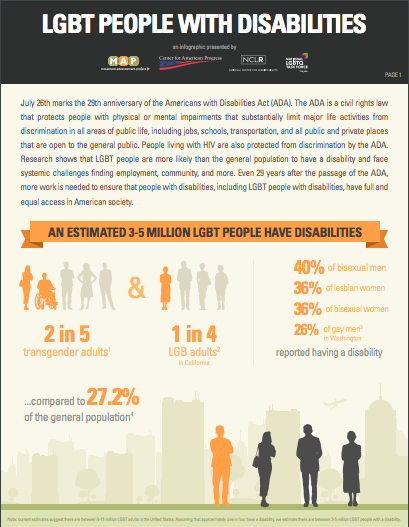New research
shows that LGBT people are more likely to have a disability than the general population. For example, in a survey of more than 26,000 transgender people,
39% reported having a disability. And one in three lesbians and one in three bisexual women report having a disability in a population-based survey in Washington. As the country reflects on what work remains for the full inclusion of people with disabilities in America, the Movement Advancement Project, in partnership with the Center for American Progress’s Disability Justice Initiative and LGBT Research and Communications Project, the National Center for Lesbian Rights (NCLR), and the National LGBTQ Task Force, released a short summary of what we know about LGBT people with disabilities.
LGBT People with Disabilities: Full ReportDownload
Recommended citation:
Movement Advancement Project. July 2019.
LGBT People With Disabilities.
https://www.lgbtmap.org/lgbt-people-disabilities. (Date of access).


